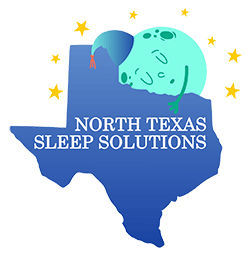

According to the National Sleep Foundation, a majority of post-menopausal women are less satisfied with their sleep. The changing level of estrogen often causes symptoms like hot flashes, mood disorders, insomnia, and sleep-disordered breathing, which all contribute to poor quality sleep.
Studies show that as women enter menopause, their risk for obstructive sleep apnea significantly increases. What’s worse, many of the symptoms of menopause can overlap with the warning signs of sleep apnea.
Dr. Rebecca Lauck and the staff at North Texas Sleep Solutions highly recommend that patients learn more about these common health concerns to decide if they need further evaluation.
Menopause and its Health Effects
What is menopause? The term menopause refers to the natural life event when a woman has missed her periods for 12 consecutive months. The absence of a period marks the end of fertility and the production of the hormones estrogen and progesterone.
For most women in the United States, menopause begins at age 51, but it can start as early as age 40 or as late as age 55. Induced menopause can also occur with the surgical removal of the ovaries, chemotherapy/radiation damage to the ovaries, or from certain medications.
The effects of menopause are different for each woman. Some of the most common changes women will experience include sleep disturbances, anxiety, depression, chronic headaches, difficulty with memory, and hot flashes.
The Role of Menopause in Sleep Apnea
Estrogen and progesterone are helpful for promoting and regulating sleep. With the decreased production of these hormones, women will notice a significant impact on the quality of their sleep. Researchers have also noticed that the decreased levels of estrogen correlate with the increase in incidences of obstructive sleep apnea (OSA).
Researchers from St. Michael’s Hospital at the University of Toronto compared the rate of sleep apnea in women who were pre- and post-menopausal by studying records of nearly 2,000 women. The study found that 48% of women age 55 and up had sleep apnea, compared to the 22% of women who were pre-menopausal.
While changes in hormones are a major contributor to developing sleep apnea, there are several other risk factors women should be aware of. Risk factors include neck circumference, obesity, tobacco use, enlarged tonsils, and high blood pressure.
Treating Sleep Apnea in Post-menopausal Women
Sleep apnea is particularly dangerous for post-menopausal women because the symptoms of this condition can often be overlooked as symptoms of menopause. Some of the overlapping symptoms of menopause and sleep apnea include:
- Difficulty with concentration
- Memory loss
- Mood changes or mood swings
- Weight gain
- Difficulty with sleeping — daytime sleepiness and insomnia
The misdiagnosis of these symptoms as menopause instead of sleep apnea can have severe implication on overall health and wellness. Untreated sleep apnea can increase your risk for complications like high blood pressure or heart health problems, type 2 diabetes, metabolic syndrome, and liver problems.
Contact North Texas Sleep Solutions
If you suspect your menopausal symptoms may actually be related to sleep apnea, don’t delay seeking treatment! Here at North Texas Sleep Solutions, we’ll guide you to the appropriate treatment recommended by the American Academy of Sleep Medicine.
To learn more about our services, contact our office in Keller to schedule your no-obligation consultation with Dr. Rebecca Lauck.
